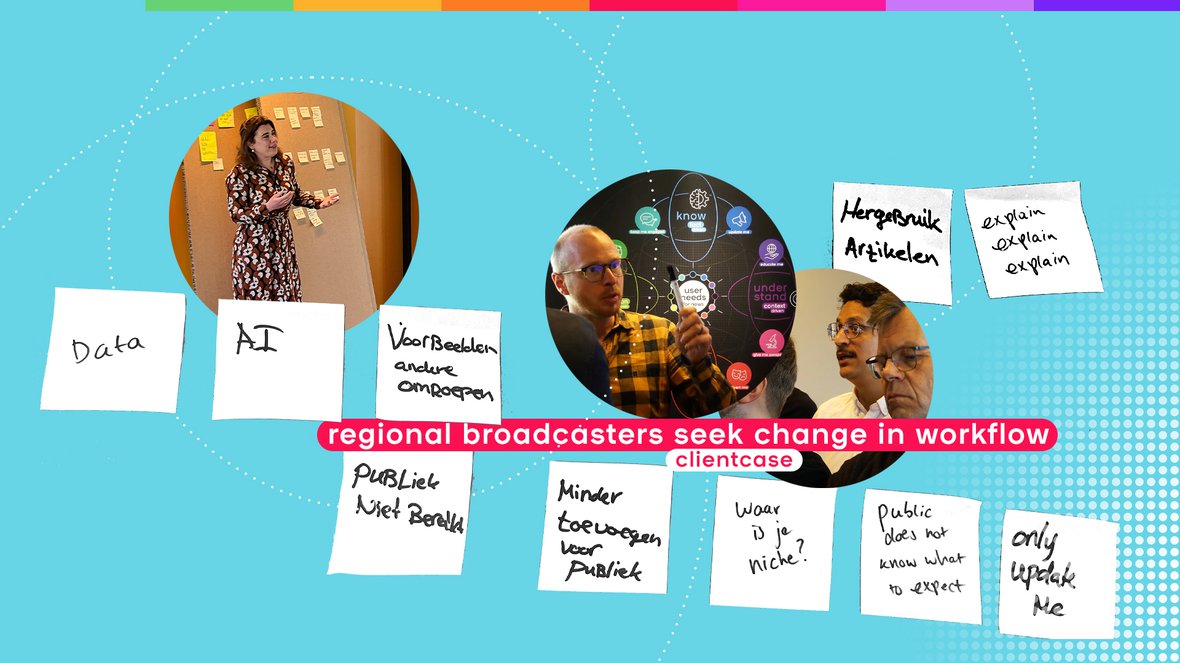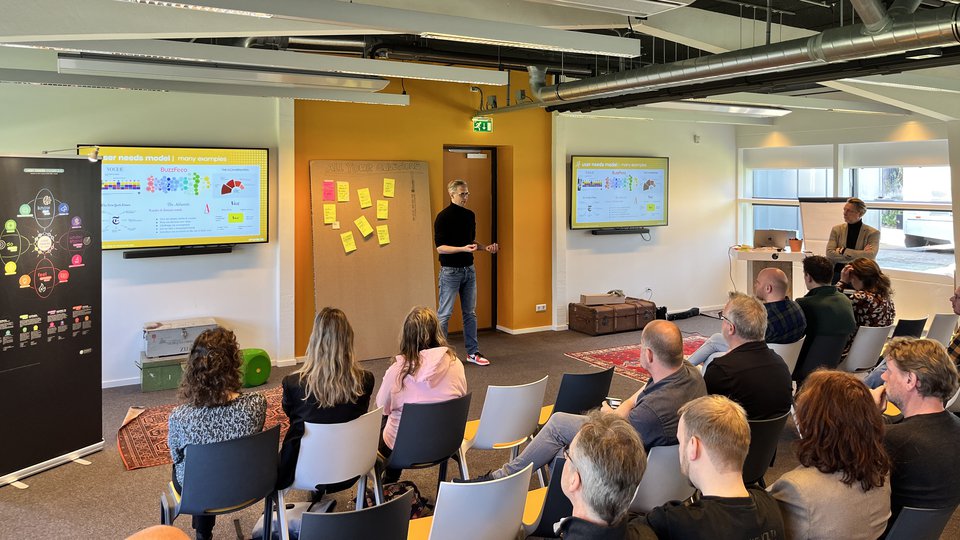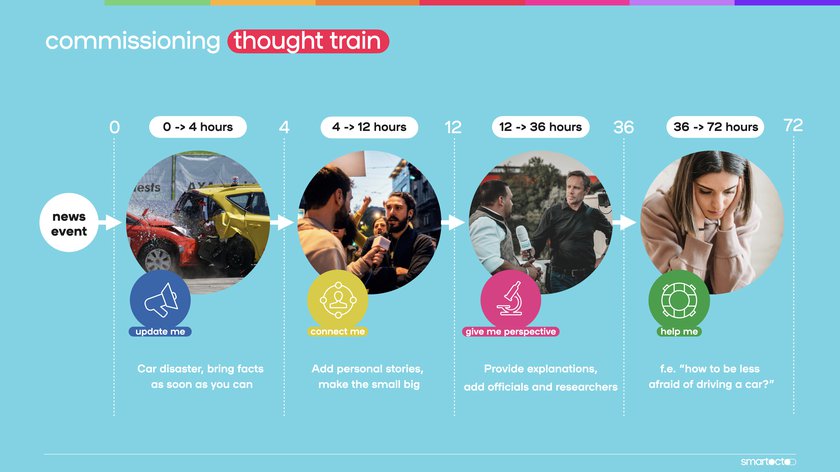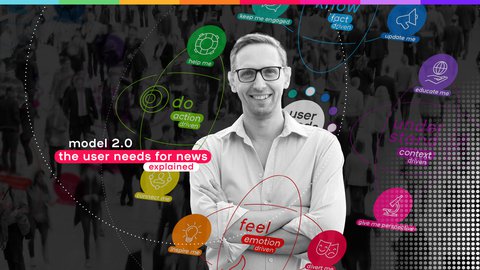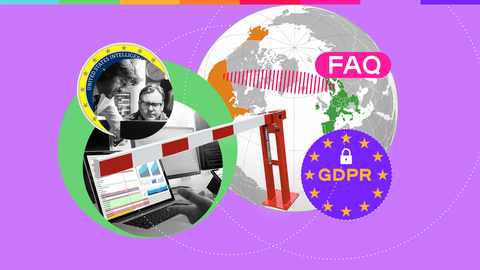Collaborating to enhance the editorial process seems like a logical move. But as a journalist, you may prefer to maintain independence and autonomy when altering your workflow. However, the Dutch regional broadcasters are pioneering a shift that prioritises user needs as a starting point for change.
Are audience needs really so different from a few years ago? No, but they have become more important in a media landscape that is increasingly focused on niches, say Dmitry Shishkin and Rutger Verhoeven to their guests during a masterclass in Utrecht. "Only 3 percent of everything people do on the internet is consuming news," says Dmitry. "People have other things to do. Therefore, you have to make extra effort to be of value."
A group of 40 reporters and editors from all 13 Dutch regional broadcasters came together to learn and discuss the needs of their visitors. Their employers are in the process of putting together a data team to help the editorial teams better interpret what they see in the graphs and overviews of smartocto.
"Think about your unique selling point," Dmitry tries to stimulate. "What is the mission of your organisation? My experience is that if you ask 10 colleagues, you may get 10 different answers. That is a problem."
Creating discussion upfront
Instead of relying solely on internal criticism after an item is created, it is more effective to employ a user-needs approach that prioritises upfront discussion and feedback.
For example, the editors of Omroep Flevoland talk about an item on their social media in which people in a fishing village were asked what the name of the famous fish sauce is that you get with every stand. An item that would fall under ‘Divert me’ in the User Needs Model. It was pure entertainment because all the people in the voxpop only gave wrong answers - schadenfreude. "But in the end, there was a lack of explanation: what is the correct name of that sauce?" says one of the editors. "So then discussion arises with the question of what the goal was and whether this type of content is appropriate for us." (For those who really want to know: the answer was ravigote sauce)
It is useful - no, even necessary - for a good content strategy to form the basis of what you publish daily, says discussion leader Rutger Verhoeven. "User needs help determining what the public is waiting for. That is the starting point for a thorough analysis."
Do you want us to tell you how user needs can help you? Please get in touch or check out our user needs packages.
